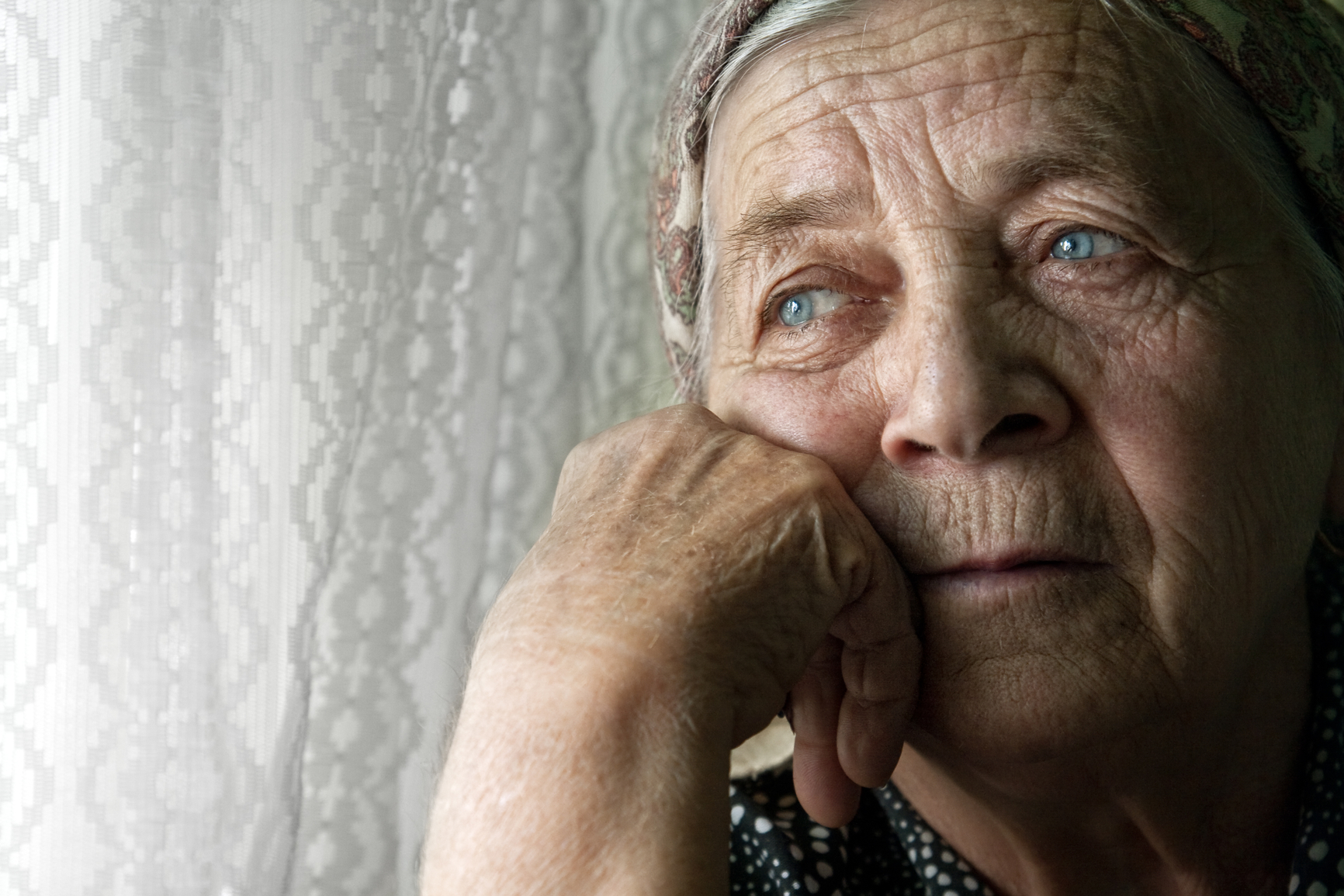Mental illnesses are just as varied as physical illnesses. They affect mood and feelings, cause anxiety and compulsions, distort perception, or interfere with thinking and memory. Read here which diseases have psychological causes, how they are classified, how they are recognized and what treatment options are available.
Mental illnesses are widespread: every citizen suffers from one or more mental illnesses within a year. Because mental illness is invisible like a broken leg, the suffering it causes is often underestimated. A large proportion of those affected receive no help. Read here what forms of mental illness there are, how they can be treated and where you can find help.
- Mental illnesses
- Mental illnesses in children
- mental illnesses in old age
- symptoms
- causes
- diagnosis
- treatment with medication
- psychotherapeutic treatments
- Professional help: differences
Mental illnesses
The most common mental illnesses are anxiety disorders. More than 16 percent of people in this country suffer from it within a year, followed by alcohol-related disorders (11 percent) and depression (8 percent). Those affected often experience several mental illnesses at the same time, which can reinforce each other. For example, depression and anxiety disorders often coexist. Many mentally ill people also try to “treat” their symptoms themselves to a harmful extent with alcohol or other mentally active substances.
Mental disorders: what types are there?
Depending on the symptoms and causes, mental illnesses can be classified into different groups.
anxiety disorders
In the case of an anxiety disorder, the patient suffers from fears for which there is objectively no or no appropriate reason. The symptoms of an anxiety disorder can be so severe that those affected are severely restricted in their participation in life.
mood disorders
Affective disorders affect the mood and feelings of the sufferer. These include depressive symptoms such as a lack of joy, despair and inhibition of drive, but also manic symptoms such as excessively high spirits with pronounced risk behavior.
psychotic disorders
Psychotic disorders are accompanied by a loss of reality. These include hallucinations, delusional disorders or ego disorders in which those affected lose the sense of their own ego.
eating disorder
Eating disorders have increased significantly in frequency over the past few decades. Anorexia nervosa receives the most attention. However, it occurs much less frequently than bulimia (addiction to eating and vomiting) and binge eating disorders .
obsessive compulsive disorder
Compulsive cleaning, washing hands , counting, checking : obsessive -compulsive disorders significantly impair the quality of life of those affected. Confrontation therapy, in which those affected gradually face their fears, can then help. For example, someone who is obligated to wash their hands intentionally soils them and then refrains from the cleaning ritual for the agreed time. At first they will feel strong inner restlessness or even fear if they cannot live out the ritual. Because this breaks down again on its own, he increasingly learns to control his compulsion.
Somatoform Disorders
People with somatoform disorders suffer from physical complaints for which no organic cause can be found that adequately explains the extent of the complaints. They manifest themselves, for example, in the form of pain, dizziness, gastrointestinal complaints , heart problems or breathing difficulties.
stress disorders
Psychologists understand stress disorders as reactions that occur after severe mental stress. These include acute stress disorder (“nervous breakdown”), which occurs immediately after an event, and post -traumatic stress disorder (PTSD), which manifests itself with a delay. Sometimes so-called adjustment disorders are also included, in which a stressful event is difficult to overcome (e.g. a separation, job loss).
personality disorders
Borderliner , narcissistic , dissocial type: Psychology names ten different personality disorders with very different characteristics. They all cause those affected to have significant social deficits and thus cause problems in their interpersonal relationships. It is often difficult for those affected to recognize their behavior as the source of the problem.
Organic mental disorders
Organic disorders in the brain, such as the death of certain brain cells, cause psychiatric symptoms. A common example of this is dementia , in which not only memory and thinking ability decrease, but also anxiety and depression often occur.
Mental illnesses in children

Whether anxiety disorder or depression: Even small children can become seriously ill with a mental illness. Young children then often complain of headaches and stomachaches because they have no words for the inner pain. Adolescence and the insecurities that accompany it is a phase in which mental disorders increase.
The following signs can indicate a mental disorder in childhood and adolescence:
- Timidity, shyness, withdrawal
- Listlessness, loss of interest
- Hyperactivity, restlessness
- Inattention, difficulty concentrating
- Self-injurious behavior (nail biting, hair pulling, scratching, etc.)
- aggressiveness
- Significant weight loss or gain
- falling silent (mutism)
- Compulsively repeated actions
- Tics (eg, blinking, twitching, vocalizing)
- bedwetting
Behavioral disorders in childhood and adolescence
Whether aggressive behavior, extreme shyness or hyperactivity: behavioral problems and disorders in childhood and adolescence prevent young people from developing according to their potential. In many cases, behavioral disorders trigger significant social conflicts.
Mental illnesses in old age

Mental illnesses are often overlooked in older people. Mood changes such as listlessness, depressed mood and loss of interest are then often classified as a normal age-related phenomenon, although depression is actually behind it.
Addiction disorders often go undetected. Unsteady gait, forgetfulness and confusion can also be due to alcohol or tablet addiction.
In any case, the treatment of mental illnesses is also important in old age. Even in the case of very old people, the psychological well-being can be significantly improved and the quality of life in the last phase of life increased considerably.
Mental Illness: Symptoms
As diverse as mental illnesses are, so are the symptoms that accompany them. For outsiders, they are usually very difficult to understand – and sometimes even frightening. This is another reason why people with mental illnesses are still often excluded.
The following symptoms can indicate a mental disorder:
- mood swings
- Dejection , listlessness
- Inner restlessness , overexcitement, nervousness
- Insomnia , nightmares
- memory and concentration disorders
- Fears that are rationally incomprehensible or objectively exaggerated appear
- loss of libido
- Delusions, hallucinations
- Physical symptoms such as back pain
suicidal thoughts
Some people with a severe mental illness develop suicidal thoughts because of the great psychological strain. In severe depression, they are even a common symptom and part of the illness.
It is important for friends or family members to always take suggestions about suicide seriously. Encourage those affected to seek professional help and support them in doing so.
Mental illnesses: causes
A predisposition to mental illness lies dormant in the genes. However, mental illnesses often only appear when unfavorable external factors are added. Stressful situations in particular favor the onset of mental illness. In addition to negative experiences such as bullying or job loss, there can also be positive ones such as career advancement, a move or the birth of a child.
Childhood imprints have a significant impact on vulnerability or resilience to mental illness. Crucial to inner stability is a reliable, loving, and empowering attachment to a caregiver—be it a parent or someone outside of the family.
Mental Illness: Diagnosis
There are currently no objective, measurable parameters for mental illnesses, such as specific blood values or the results of brain scans. The diagnosis is made on the basis of special questionnaires and the subsequent assessment by psychiatrists and psychologists.
The diagnosis is not easy because the symptoms vary greatly. In addition, some sufferers try to hide their illness out of shame, for example in the case of addiction, or out of mistrust, for example in the case of delusional illnesses.
Mental illnesses: treatment with medication
Various medications and psychotherapeutic therapy models are available for the treatment of mental illnesses. Drugs often target the neurotransmitter balance in the brain, which is often out of balance in people with mental illnesses. Others generally have a calming effect or dampen delusions. Depending on the symptoms, a combination of several active ingredients may also be necessary.
medication for anxiety disorders
The umbrella term anxiety disorders roughly comprises five distinct forms, for which different medications are licensed. Among other things, the following are used:
- citalopram
- escitalopram
- paroxetine
- Venlafaxine
- clomipramine
- pregabalin
- moclobemide
- buspirone
medication for depression
If depression is treated with medication, it usually takes two to three weeks for the antidepressant (mood-lifting) effect to kick in. Drugs used are:
- citalopram
- sertraline
- fluoxetine
- Venlafaxine
- duloxetine
- bupropion
- mirtazapine
- trazodone
medication for mania
Manic disorders are associated with delusional-psychotic complaints, self-injurious behavior and uncritical endangerment of others. The following are used in drug treatment:
- lithium
- valproic acid
- aripiprazole
- asenapine
- olanzapine
- Quetiapine
- risperidone
- ziprasidone
Drugs for psychotic disorders
Psychotic disorders such as schizophrenia often require medical treatment. Common active ingredients in therapy are:
- haloperidol
- amisulpride
- aripiprazole
- risperidone
- paliperidone
- ziprasidone
- olanzapine
- fluphenazine
Medication for eating disorders
Eating disorders are the mental disorders with the highest mortality. They are a common disease in adolescence. In severe cases, therapy with medication as part of an overall treatment plan may be necessary:
- olanzapine
- fluoxetine
- desipramine
- topiramate
- amitriptyline
- imipramine
- orlistat
Medication for obsessive-compulsive disorder
Obsessive-compulsive disorders often result in severe impairment of psychosocial functioning. The aim of the treatment is to improve the obsessive-compulsive symptoms. Applicable:
- citalopram
- escitalopram
- paroxetine
- fluvoxamine
- sertraline
- clomipramine
- Venlafaxine
Drugs for addictions
Alcohol, opioid, cannabis and cocaine or amphetamine abuse are by far the most common addictions in Europe and the USA. Withdrawal is difficult and is supported with the following medications:
- clomethiazole
- acamprosate
- disulfiram
- naloxone
- naltrexone
- buprenorphine
- methadone
- morphine
- clonidine
- desipramine
- nortriptyline
Drugs for somatoform disorders
Somatoform disorders are physical symptoms for which no sufficiently explanatory organic cause can be found, despite medical clarification. Helpful drugs in connection with psychotherapy are, for example:
- opipramol
- pregabalin
- gabapentin
- duloxetine
- milnaciprane
- citalopram
- sertraline
- Quetiapine
medication for personality disorders
Drugs are just one component among many in the treatment of people with personality disorders. Among other things, the following are used:
- amitriptyline
- fluoxetine
- fluvoxamine
- tranylcypromine
- lithium
- aripiprazole
- olanzapine
medication for dementia
There are different forms of dementia and not all are amenable to drug therapy. The following medications are available for dementia of the Alzheimer type:
- rivastigmine
- donepezil
- galantamine
- memantine
medication for ADHD
Attention Deficit Hyperactivity Disorder (ADHD) is a complex clinical picture that manifests itself either in the form of an attention deficit disorder or hyperactivity or a combination of both and usually becomes apparent in childhood. Approved drugs are:
- methylphenidate
- amphetamine
- Lisdexamphetamine
- Atomoxetine
- guanfacine
Mental Illness: Psychotherapeutic Treatments
There are a number of different psychotherapeutic approaches. They help to overcome entrenched unfavorable or self-deprecating thought patterns that fuel many mental illnesses. Or they help to control fears and help to resist addictive impulses.
Psychotherapy can have a lasting positive effect on or even overcome many mental illnesses. A combination of both approaches is often useful.
Professional help: differences between psychotherapist, psychiatrist, psychologist
Psychotherapist, psychiatrist, psychologist – they are all experts who are familiar with the human psyche. However, only those who have completed additional psychotherapeutic training are suitable as therapists.
Not every psychologist is automatically a therapist. This requires a degree with a focus on clinical psychology. Several years of additional practical training follow. Since psychological psychotherapists do not complete a medical degree, they cannot prescribe psychotropic drugs.
A psychiatrist, on the other hand, has completed a medical degree and then completed a residency in psychiatry. A psychiatrist can make psychiatric diagnoses and prescribe appropriate medication and refer you to a psychological psychotherapist. Psychiatrists rarely offer psychotherapeutic treatment.
